The intricate design and strategic ingenuity behind Viking ships, is an example of when maritime mastery met technological innovation. The art of crafting vessels that could navigate treacherous waters while wielding power on the open seas was a skill honed to perfection by these ancient seafarers.
But what set these ships apart from others of their time? What secrets lie within the construction techniques and materials used?
And how did their navigation skills contribute to their dominance at sea? These questions only scratch the surface of the fascinating tale of Viking shipbuilding, a narrative waiting to unfold before you.
Viking Ship Design Innovations
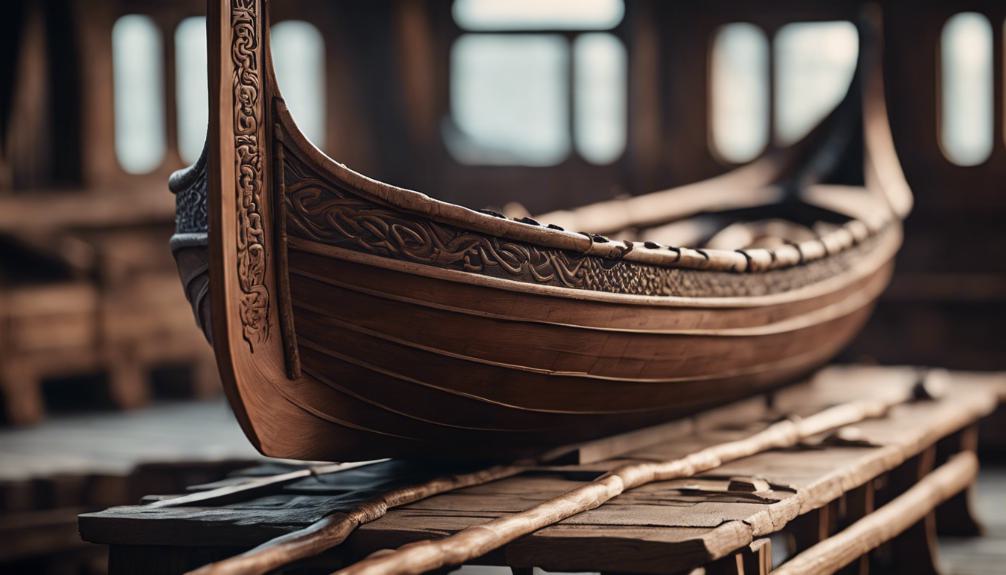
Utilizing a shallow-draft hull and symmetrical bow and stern, Viking ships were engineered for swift maneuverability during raids and exploration. The streamlined Scandinavian design of the award-winning Viking Longships allowed them to glide through both open seas and narrow rivers with ease. Their innovative patented design, featuring a symmetrical bow and stern, enabled quick directional changes, essential for surprise attacks and navigating unknown waters efficiently.
The combination of sails and oars on Viking longships was a strategic choice, granting them versatility in various sea conditions. This unique blend of propulsion methods made these ships not only fast but also highly adaptable to different wind strengths and currents. The clinker construction method, with its overlapping planks and iron rivets, ensured the durability and flexibility needed for long journeys and intense battles at sea. Viking ship design innovations were a tribute to the ingenuity and craftsmanship of these ancient seafarers, setting them apart as formidable naval architects of their time.
Construction Techniques and Materials

Viking longships were renowned for their construction techniques and materials that contributed to their speed, agility, and adaptability in various water bodies, showcasing the advanced craftsmanship of the Viking seafarers.
The art of building these vessels was a vital aspect of Viking society for centuries, with the construction techniques and materials used playing a pivotal role in the success of their naval expeditions.
The clinker method, which involved overlapping planks riveted together, provided flexibility and durability to the longships. Iron rivets and watertight caulking guaranteed that the vessels were sturdy and seaworthy, capable of withstanding challenging maritime conditions.
Oak wood, known for its strength and resilience, was the preferred material for constructing Viking longships. The craftsmanship of the Vikings was evident in the intricate details and precision of the construction process, highlighting the superior quality that their longships offered both in form and function.
Navigation and Seamanship Skills
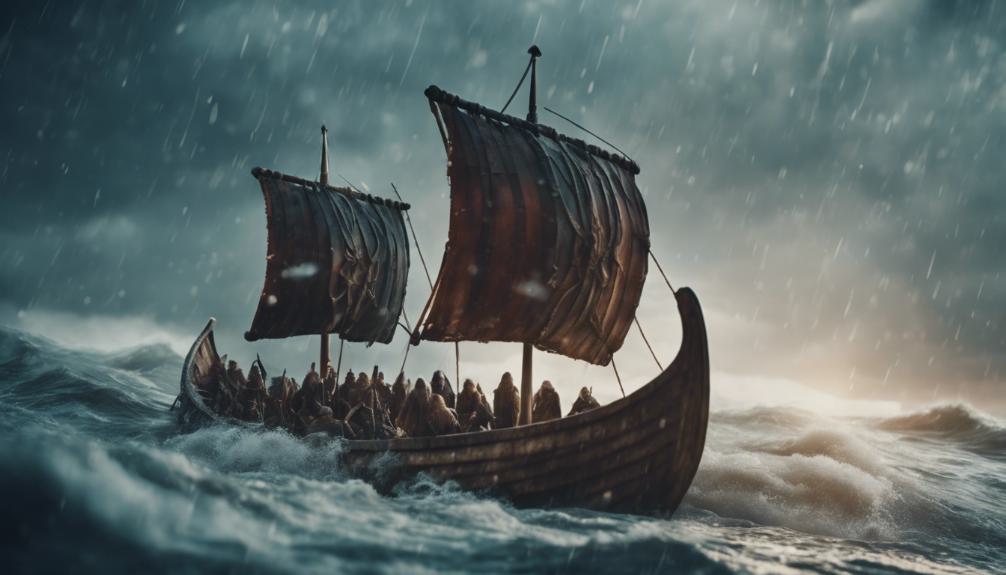
When traversing the open waters, the Viking sailors honed their skills in interpreting celestial cues and natural elements to steer their longships with precision and mastery. Viking navigators were adept at using sunstones and stars for celestial navigation at sea, allowing them to plot their course even when far from land. Their seamanship skills went beyond just celestial navigation; they also involved reading wind patterns, understanding currents, and interpreting weather signs to guarantee safe passage.
Viking longships were designed with shallow drafts for river navigation, enabling them to travel deep inland for raids and exploration. Moreover, these ships boasted flexible steering mechanisms that granted them exceptional maneuverability in various water conditions. When sailing along the coast, Viking sailors relied on landmarks, bird migrations, and natural phenomena to guide their way. Navigation tools such as the sun compass and rudimentary maps further aided their journeys, facilitating exploration and the establishment of lucrative trade routes. The combination of advanced navigation techniques and superior seamanship skills allowed the Vikings to navigate the seas with remarkable expertise and confidence.
Strategic Advantages in Warfare
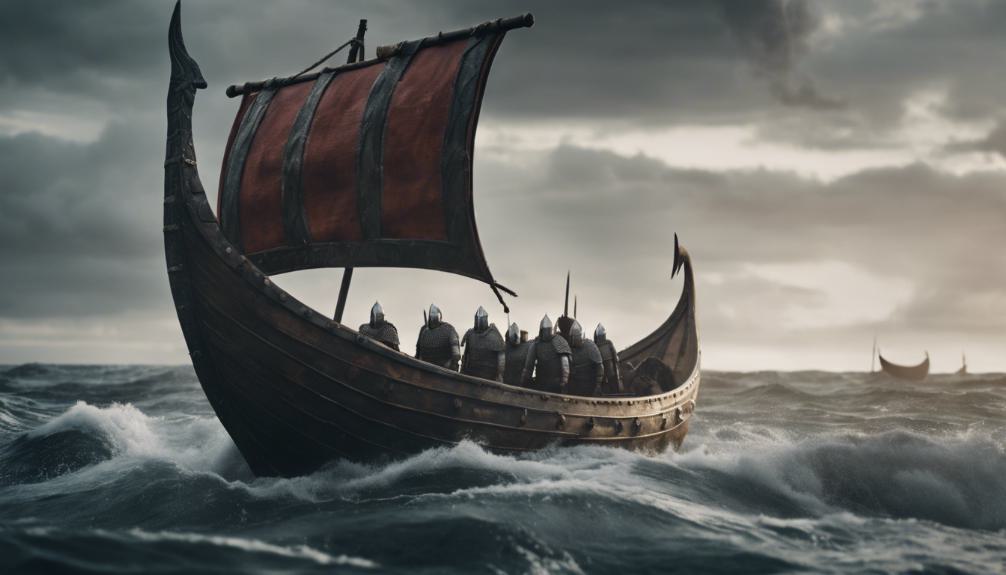
With their shallow draft design and flexible hulls, Viking longships gained significant strategic advantages in warfare situations. The shallow draft design allowed Viking longships to navigate shallow rivers and reach unsuspecting locations, giving them the element of surprise over their enemies. The flexibility of the hulls meant that these ships could bend with the waves, making them more maneuverable in rough seas and less prone to damage.
The engineering elements of Viking longships, such as their durability and maneuverability, provided them with a tactical advantage in battles and raids. The beitass spar on Viking longships enabled them to sail efficiently close to the wind, giving them an edge in naval warfare scenarios. Moreover, the versatile design of Viking longboats allowed them to sail in any direction, making them formidable opponents on the seas.
Trade Routes and Economic Impact
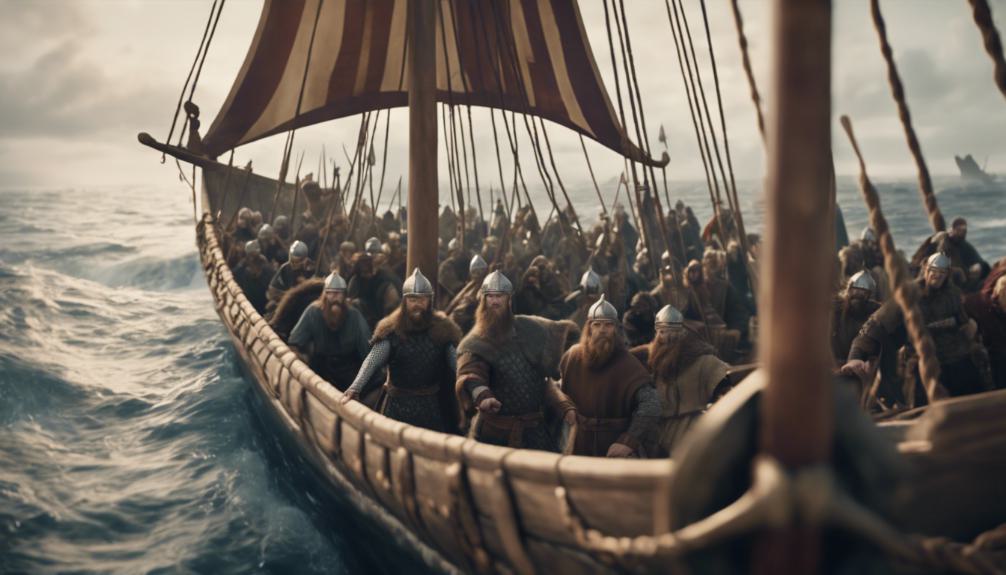
Sailing trade routes from Scandinavia to the Mediterranean, Viking ships facilitated extensive economic exchanges, impacting regional economies through the transportation of goods such as amber, furs, slaves, and precious metals. These goods trading activities were pivotal in shaping the economic landscape of the regions they touched. The efficient transportation capabilities of Viking ships not only contributed to the growth of trade networks but also played a significant role in enhancing economic prosperity. Additionally, the economic impact of Viking trade routes extended beyond mere goods trading; it fostered cultural exchanges, spurred technological advancements, and even forged political alliances.
One of the key strengths of Viking ships was their ability to navigate various water bodies, granting access to diverse markets. This access to diverse markets meant increased economic opportunities for the Viking traders. The extensive trade routes established by the Vikings not only boosted economic activities but also laid the foundation for broader cultural interactions, technological transfers, and the establishment of lasting economic ties across regions.
Exploration and Expansion of Influence
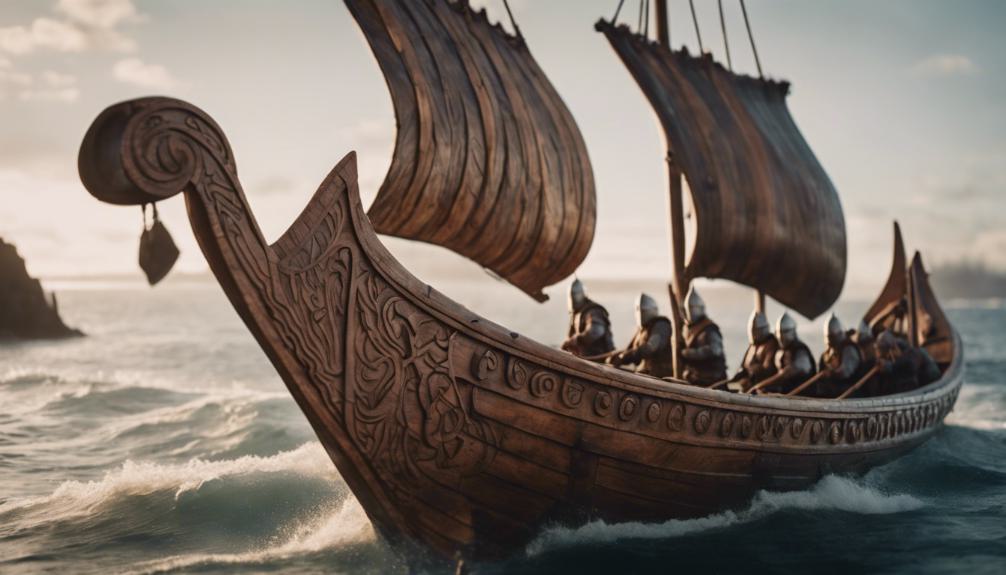
Viking longships, with their remarkable engineering, swiftly expanded Norse influence across Europe and beyond. These iconic vessels weren’t only symbols of maritime dominance but also instrumental in the exploration and expansion of Viking influence. The ability to navigate rivers and open seas allowed Vikings to reach distant lands, establishing trade routes, conducting raids, and forming settlements. This maritime prowess enabled them to project power far beyond their homelands, shaping the cultural and political landscapes of medieval Europe.
The engineering feats of Viking longships played a pivotal role in their success. Their speed, agility, and seaworthiness were unparalleled during ancient times, showcasing advanced maritime technology. This technological superiority not only facilitated exploration but also solidified Viking dominance at sea. The cultural impact of these expeditions was profound, as they introduced Norse customs, language, and beliefs to regions far and wide. Through their voyages on longships, Vikings left an indelible mark on history, forever altering the course of European civilization.
Cultural Significance of Viking Ships
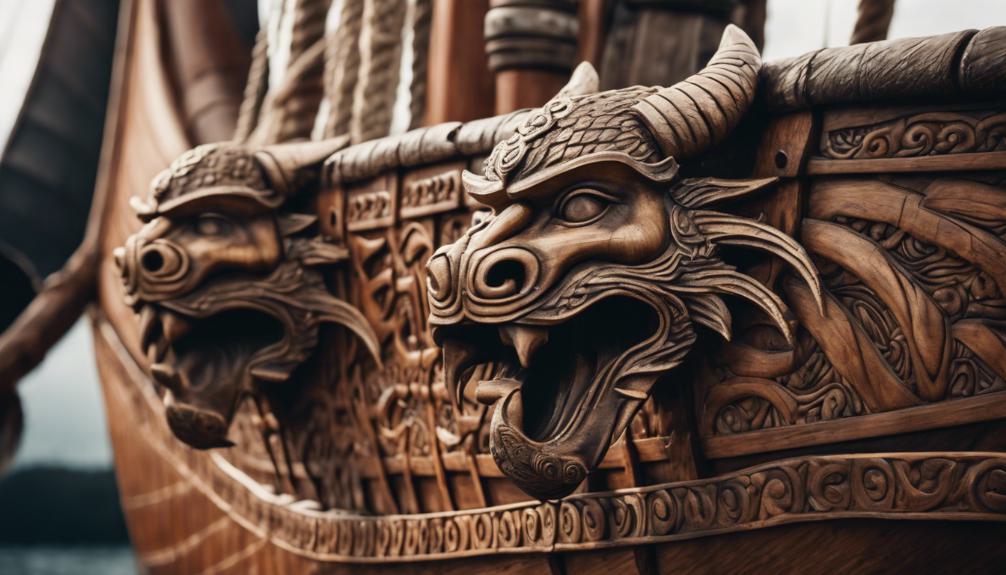
How did the engineering marvels of Viking ships shape the cultural landscape of medieval Europe and beyond?
Viking ships played a pivotal role in spreading Viking culture through trade and exploration, leaving a lasting impact on the regions they reached. The distinct design elements of these vessels, such as their shallow draft and durability, provided strategic advantages that contributed greatly to their success and influence. The flexibility and sturdiness of Viking ships not only made them formidable in warfare but also enabled them to navigate rivers and seas, allowing for extensive exploration and trade routes.
These engineering marvels reshaped regions like the British Isles and modern-day Russia, as Viking longboats became symbols of power and sophistication. The cultural impact of Viking ships on the societies they encountered was profound, showcasing the prowess and ingenuity of Viking craftsmanship. As Viking culture spread far and wide, these ships became synonymous with adventure, conquest, and the spirit of exploration, leaving a legacy that transcended borders and time.
Legacy of Viking Shipbuilding
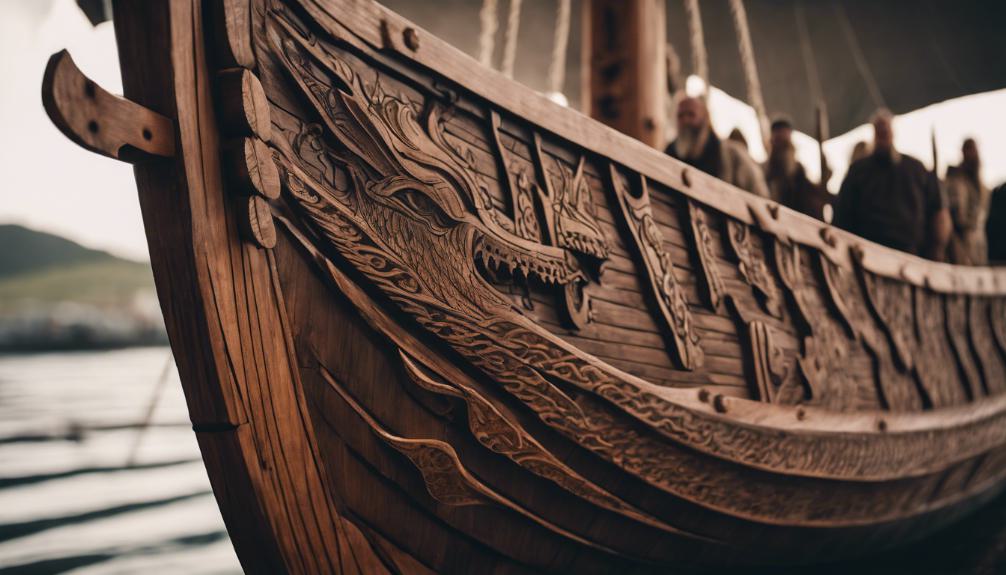
The enduring legacy of Viking shipbuilding resonates through the annals of maritime history, shaping the very fabric of medieval Europe and beyond.
Viking longships, with their advanced construction techniques such as the clinker method and watertight caulking, weren’t only durable but also instrumental in facilitating Norse expansion through exploration, trade, and warfare.
The symmetrical design of these ships allowed for quick maneuvering during raids and navigation in various water bodies, showcasing the Vikings’ mastery of naval architecture.
Modern Reconstructions and Museum Exhibits
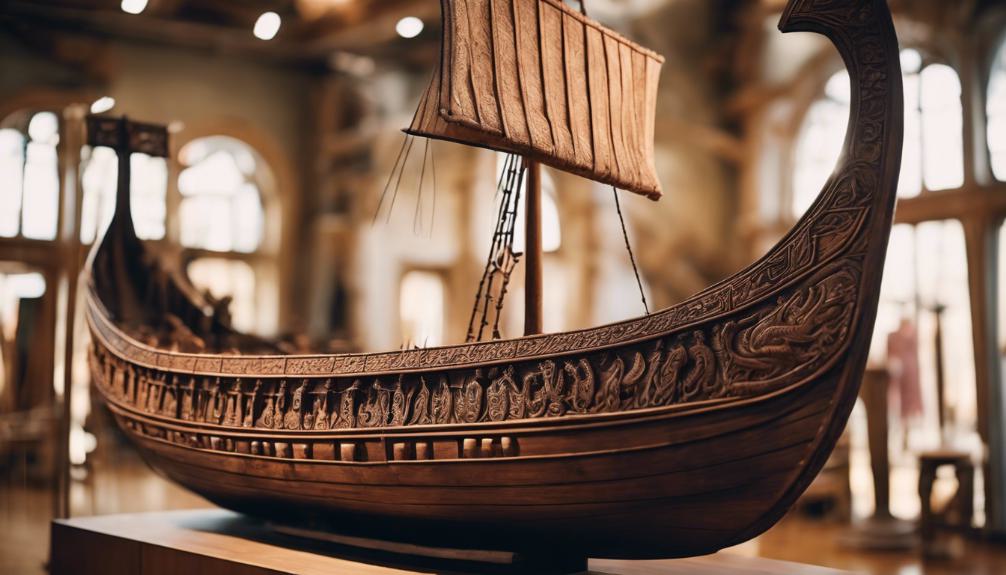
Exploring modern reconstructions and museum exhibits of Viking ships reveals a fascinating glimpse into the intricate craftsmanship and historical accuracy of these ancient vessels. Modern reconstructions of Viking ships are carefully crafted to mirror the original designs, showcasing the advanced maritime engineering techniques employed by ancient shipbuilders. These reconstructions not only emphasize historical accuracy but also highlight the innovative features and sailing capabilities of Viking ships.
Museum exhibits featuring Viking ships provide valuable insights into the maritime engineering prowess of the Vikings. Through advanced technologies and extensive research, these exhibits offer a unique opportunity to explore the past and appreciate the significance of these seafaring vessels. Interactive displays within these museums allow visitors to immerse themselves in the world of Viking ships, experiencing firsthand the craftsmanship and ingenuity that went into their construction.
In essence, modern reconstructions and museum exhibits play an essential role in preserving the legacy of Viking ships and educating audiences about their enduring impact on maritime history.

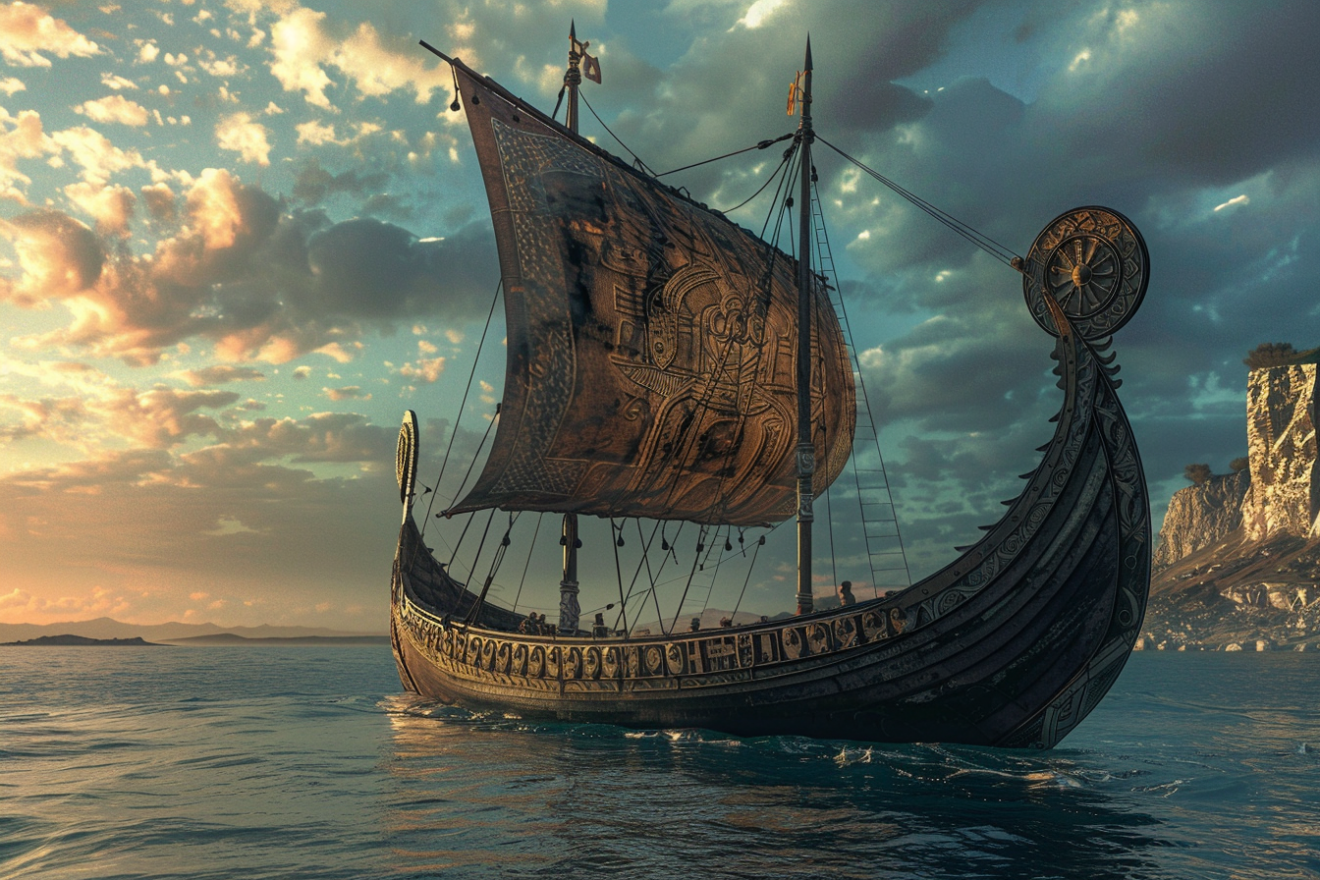
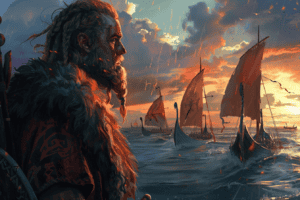
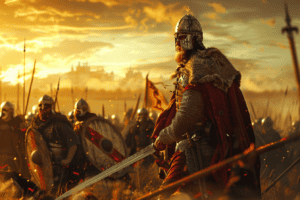






Add Comment